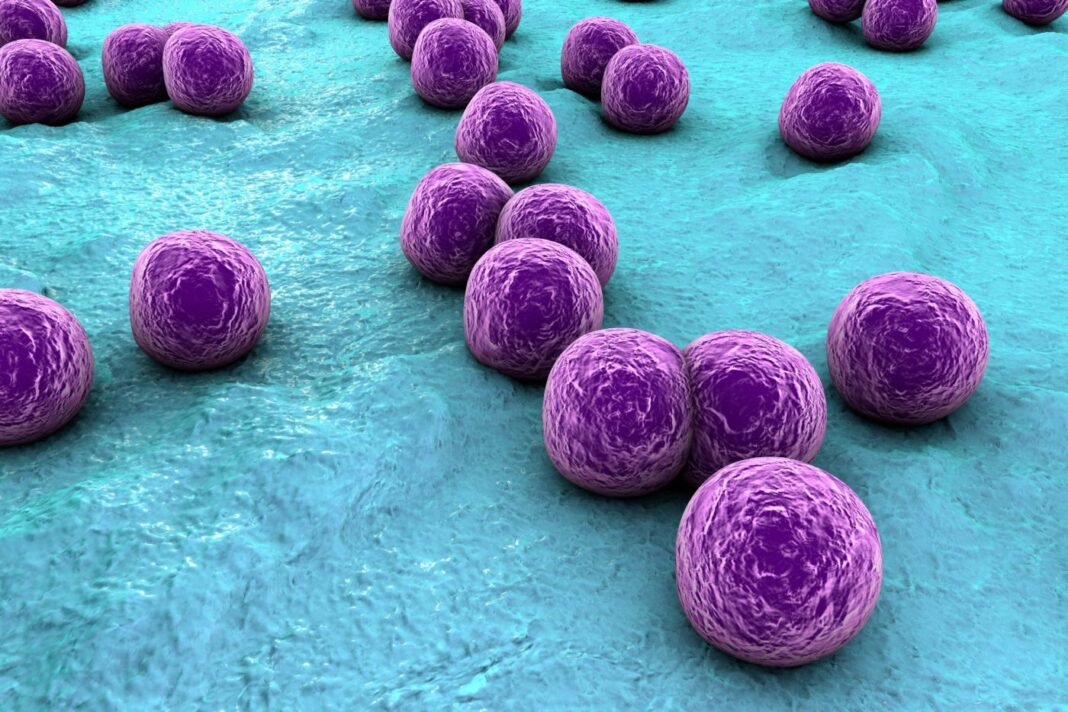Staphylococcus aureas, a common cause of skin and respiratory infections, is highly unpredictable. Between 20 and 30 percent of people carry quiet colonies on their skin and in their nostrils, which seldom cause problems beyond the occasional rash.
However, in in some cases, these bacteria cause infections that lead to deadly complications, such as pneumonia, deep skin infections, and sepsis. Until recently, there was no way to predict which infections may take a lethal turn.
Now, a new study describes mutations that predispose patients to severe staphylococcal infections. The research paper, “Human OTULIN haploinsufficiency impairs cell-intrinsic immunity to staphylococcal α-toxin,” published in Science, identifies a mutated gene common to multiple patients who suffer life-threatening staph infections and suggests that people living with a genetic condition known as 5p- or Cri-du-chat syndrome may be at similar risk.
“The molecular basis of interindividual clinical variability upon infection with Staphylococcus aureus is unclear. We describe patients with haploinsufficiency for the linear deubiquitinase OTULIN, encoded by a gene on chromosome 5p. Patients present episodes of life-threatening necrosis, typically triggered by S. aureus infection,” wrote the investigators.
“The disorder is phenocopied in patients with the 5p- (Cri-du-Chat) chromosomal deletion syndrome. OTULIN haploinsufficiency causes an accumulation of linear ubiquitin in dermal fibroblasts, but TNF-receptor NF-κB-signaling remains intact. Blood leukocyte subsets are unaffected. The OTULIN-dependent accumulation of caveolin-1 in dermal fibroblasts—but not leukocytes—facilitates the cytotoxic damage inflicted by the staphylococcal virulence factor α-toxin.
“Naturally elicited antibodies against α-toxin contribute to incomplete clinical penetrance. Human OTULIN haploinsufficiency underlies life-threatening staphylococcal disease by disrupting cell-intrinsic immunity to α-toxin in non-leukocytic cells.”
“We have characterized severe Staphylococcus aureus infection at the genetic, cellular, immunological, and clinical levels,” said András Spaan, first author on the study and a doctoral student at the Rockefeller University. “By integrating these levels, we have established causality and provided clues for future interventions.”
A first for cell intrinsic immunity
To better understand why S. aureus causes disease in some people but not others, scientists in the laboratory of Rockefeller immunologist Jean-Laurent Casanova, MD, examined the protein-coding genomes of more than 100 patients who had suffered from unexplained severe staph infections.
The common genetic thread linking some of these disparate patients were mutations of a gene called OTULIN, which is perched along the short arm of chromosome 5 and codes for an enzyme involved in regulating inflammation. These individuals were not entirely bereft of OTULIN—only one of their two copies of the gene was mutated—but that deficiency appeared to be all it took to render them vulnerable to infections that would scarcely harm other people.
The scientists expected to find that OTULIN deficiency somehow cripples white blood cells or otherwise prevents the immune system from snuffing out S. aureus. But further investigation revealed that these mutations indirectly cause an unrelated protein to aggregate on the surfaces of skin and lung cells, gumming up the tools that those cells use to defend themselves from a toxin produced by S. aureus. This mechanism of defense is known as cell intrinsic immunity.
This finding was particularly surprising because, until then, specific defects in cell intrinsic immunity had only been linked to a predisposition to some viral infections, from Covid to herpes to encephalitis. It had never been shown to play a role in bacterial disease. “This is the first known instance of cell intrinsic immunodeficiency predisposing patients to bacterial infection,” Spaan said.
A larger role for OTULIN
While the individuals whom Spaan and colleagues studied were only missing one copy of OTULIN, people born without either functional copy of this gene face a bevy of early-onset inflammatory diseases, which often prove fatal in the first year of life.
This observation led Spaan to conclude that one functional copy of OTULIN is enough to prevent inflammatory disease, but insufficient to protect against life-threatening staph infections—a genetic mechanism known as haploinsufficiency.
“The genetic mechanism was important to pin down,” Spaan said. “People with two functional copies of the gene appear to be healthy, those with no functional copies have autoinflammatory disease, and those with one functional copy are susceptible to severe staph infections.”
Spaan and colleagues found that individuals with OTULIN mutations, but no sign of severe disease had high levels of antibodies that neutralize the toxin produced by S. aureus, perhaps due to prior exposure to the common skin bacteria. Individuals with severe disease, on the other hand, had precious few antibodies.
Further investigation into genetic predisposition to diseases, particularly those as difficult to treat as staphylococcal infections, may contribute to the development of future therapeutics.
“Studies on these disorders can act as a compass,” Spaan said. “Our research clarifies the interactions between hosts and pathogens, revealing scientific insights into pathogenesis and immunity.”


